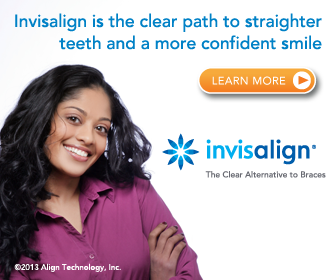Table of Contents
Specific orthodontic issues are brought on by a lack of sufficient bone development to accommodate the upper front teeth. In this situation, a palate spreading gadget is quite helpful. However, after coming home with a bright new expander, you might be wondering what could happen while wearing a palate expander. So, if you’re wondering how to eat with a palate expander, you’ve come to the right place. This article will discuss all you will need to know when adjusting to your new palatal expander.
Overview
According to several pieces of research, modern times have led to the development of humans to get more minor features and narrower dental arches than their forefathers. This is owing to the fact that modern food is softer than before. Unfortunately, small dental arches cause impacted teeth, overcrowding, and extensive buccal corridors, resulting in an unflattering smile. To address this concern, dentists use palatal expanders. This dental accessory assists in broadening the dental arches and provide more space for our front teeth. Buccal corridors are the dark areas between the teeth and cheeks. They are regarded to be more beautiful when smaller. Therefore, palatal expanders are a piece of crucial orthodontic equipment.
What Is a Palatal Expander?
There are cases when there is enough room for the upper teeth. However, other people’s palate is smaller, which hinders speech. In other circumstances, an individual’s palate appears much higher. This condition restricts the quantity of air that can travel through the nose, making deep breathing difficult without opening the mouth.
A palatal expander is a popular treatment that provides moderate pressure to the upper jaw or roof of the mouth. This appliance will help minimize, prevent, or reduce the severity of teeth and jaw issues.
Typically, a palatal expander is a standard orthodontic treatment for children at a young age. Experts recommend this technique to take advantage of before going through significant changes in the jaw and teeth area.
How Does a Palate Expander Work?
 Palate expanders are made up of two parts connected to the two sides of the jaw’s upper rear teeth. A screw is usually used to join these parts of the mouth, and it sits higher at the center of the mouth. You’ll grab hold of the key to turn and rotate the screw on a set timetable. This causes both parts of the jawbone to expand and move apart as a result of the strain.
Palate expanders are made up of two parts connected to the two sides of the jaw’s upper rear teeth. A screw is usually used to join these parts of the mouth, and it sits higher at the center of the mouth. You’ll grab hold of the key to turn and rotate the screw on a set timetable. This causes both parts of the jawbone to expand and move apart as a result of the strain.
Each palate expander is customized per patient. The orthodontist will make an imprint on the upper jaw and teeth. This impression will be transferred to a specialized professional, where the expander will be manufactured to suit the mouth exactly.
What Should I Expect After Treatment?
Patients may find it increasingly challenging to eat and regularly speak throughout therapy, typically lasting from four to six months. This might cause problems in your day-to-day routine, especially if your profession requires you to talk in front of others. However, with enough practice, you should be able to speak and eat much more manageable within a week or two.
How to Eat with a Palate Expander?
Suppose you have a palatal expander and are worrying about your ability to eat. In that case, you can follow the steps below to help transition to your new device. Here are a few tips that you can consider:
1. Cutting your food into smaller pieces
Before putting food into your mouth, you can start by chopping it into tiny bits. For example, cut spaghetti or noodles into smaller pieces. Doing this will save you from choking or gagging when you try to swallow. To assist you eat meals more smoothly, you can try drinking some water and slightly tilt your head back.
2. Sticking to soups and mashed potato
Since feeling the roof of your mouth will be a challenge, it can be tough to swallow food and even saliva. As a result, you need to stick to liquid and soft foods. These include mashed potatoes and gravy or soups. Until you acclimatize, you can gradually introduce more solid and slightly soft foods, and your eating will return to normal.
3. Avoiding sticky and hard foods
You must be highly cautious about the foods you consume and how you consume them. Sticky and hard foods can do a lot of harm to your dental accessory. Avoid chewy foods such as licorice, taffy, gums, and caramels. Also, crunchy foods like nuts, popcorn, and ice are not a good choice.
 4. Committing to a well-balanced diet
4. Committing to a well-balanced diet
It is a general principle to feed your body with nutritious food daily. You need to encourage the consumption of a variety of fruits and vegetables. This goes as well for whole grains, meat, and dairy products. Additionally, you may also include fun meals like ice cream, yogurt, and pudding. These foods will be the most convenient for you to eat with an expander while also keeping the nutrients to your developing bodies.
5. Caring after each meals
Eventually, food will become stuck on and beneath your expander. This situation might be aggravating, but a needleless syringe or Waterpik can help you manage your concern. You’ll find yourself cleaning food out from under your expander more frequently than you’d want at first. However, with practice, you’ll learn to eat in such a manner that soft foods get to where they should.
Final Words of Advice
Keeping your gums, teeth, and palatal expander clean will be your top priority while wearing it. These details are crucial because a puffy and unbrushed mouth might develop over the bands and slow down tooth mobility. This concern may lengthen the time you have to wear your expanders. Moreover, an unhealthy oral condition can cause swollen, inflamed, and painful sensations and could often result in complications.
Lastly, it is essential to keep practicing, even if it’s incredibly challenging at first. At those times when you feel tempted to discontinue your treatment, just imagine how your smile will look once your expander is taken out.
References:
https://www.healthline.com/health/palate-expander
https://www.houzz.com/discussions/2412737/food-recommendations-for-kid-with-expander
https://www.who.int/news-room/fact-sheets/detail/oral-health




